- Java Spring vs Node JS
- Advanced Node.JS Interview Questions
- Node.JS Interview Questions And Answers
- Lost in translation - Node.JS
- Basic Examples of Node.js
- In the right place at the right time - Node.JS
- Introduction to Node.js
- Next JS Interview Questions
- Node Js vs Golang
- Middleware in Node.JS
- Node.Js Projects and Use Cases
NodeJS has become essential to modern web development, allowing developers to create powerful and fast server-side JavaScript applications. Whether you’re a novice or an experienced developer, by the conclusion of this post, you’ll have NodeJS installed and ready to begin your coding journey.
An innovative technique emerged in the constantly shifting world of web development that challenges old paradigms and speeds up how we build scalable apps. Node.js is a server-side runtime environment that allows developers to create high-performance, real-time apps with incredible efficiency.
Installation of Node.js - Table of Contents
What is NodeJS?
Node.js is basically an open-source runtime environment for JavaScript code that runs outside a web browser. Ryan Dahl designed it in 2009 to allow developers to create JavaScript server-side programs. Node.js runs JavaScript on servers using the V8 JavaScript engine, originally built by Google for the Chrome browser.
It is ideal for building real-time applications like chat, online gaming platforms, and collaborative tools. Its event-driven nature and asynchronous capabilities enable seamless real-time communication. Node.js shines in the field of microservices architecture because it allows developers to design modular, scalable microservices that can communicate with one another easily.
| If you want to enrich your career and become a professional in Node.js, then enroll in "Node.JS Online Training". This course will help you to achieve excellence in this domain. |
Why NodeJS?
Node.js is known for its fast execution speed. Node.js translates JavaScript code into native machine code using Google’s V8 engine. It offers a unified development environment by enabling developers to use JavaScript on both the front and back. The seamless transition eliminates the need to switch languages for different application parts, reducing complexity and promoting better collaboration between frontend and backend teams.
Prerequisites to Install NodeJS
The following prerequisites are required to install NodeJS on your system.
- A reliable internet connection.
- A terminal or command prompt.
- Administrative privileges.
How to Install Node JS on Windows?
Below are the steps to install NodeJS on your system:
Step 1: To install NodeJS visit Node.js (nodejs.org) and download the LTS (Long Term Support) version.
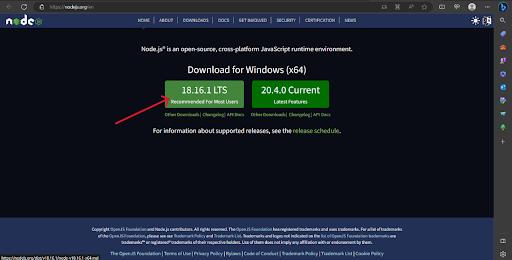
Step 2: Once downloaded, open the ‘.msi’ file. If the system prompts for, ‘Do you want to allow this app to make changes to your device?’ click ‘Yes.’
Step 3:After clicking ‘Yes,’ you will see the below prompt. Click ‘Next.’
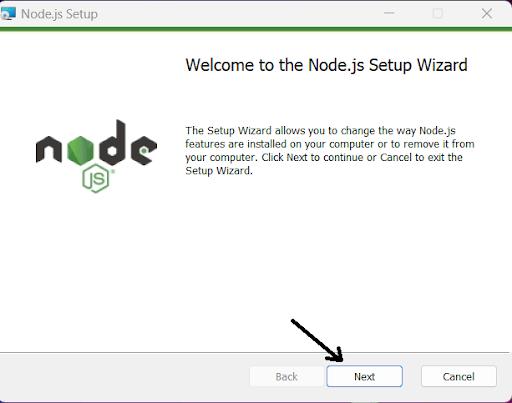
Step 4: Mark the checkbox Accept the agreement and click ‘Next.’
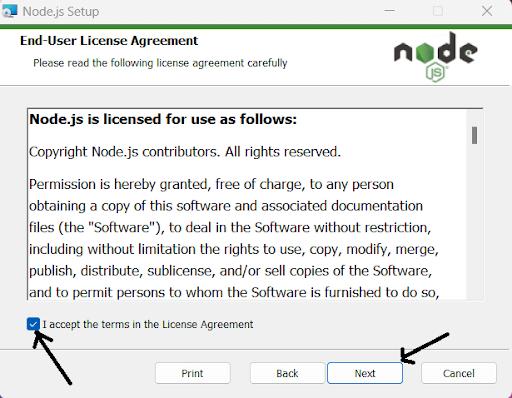
[ Check out Top Node.js Projects For Beginners ]
Step 5: Confirm the destination folder and click ‘Next.’ It is preferred to keep the settings default.
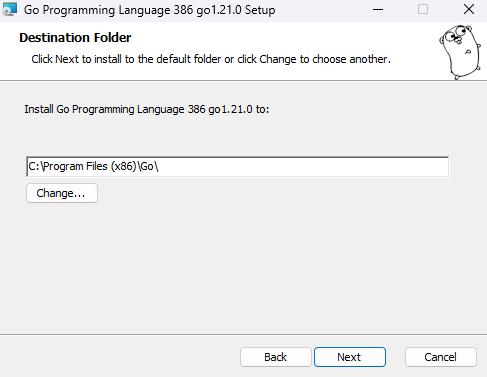
Step 6: Click on ‘Next’.
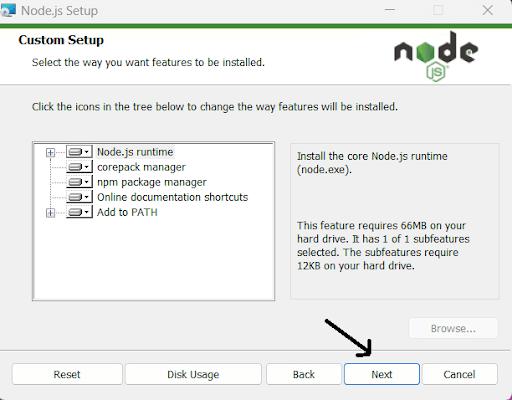
Step 7:If you want to install additional tools to be installed, mark the checkbox and click ‘Next.’ Else, you can click on ‘Next.’ (It is recommended to keep the box unchecked and click Next).
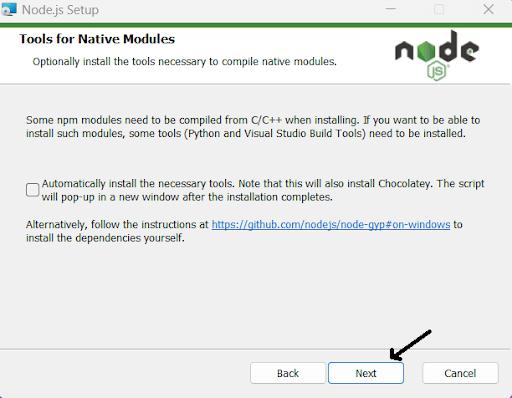
Step 8: Now our NodeJS is ready to install, click ‘Install.’
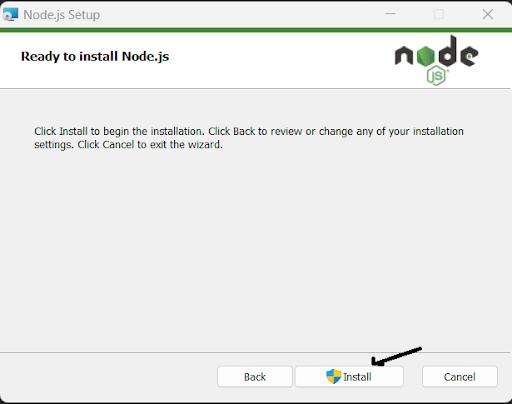
Step 9: Going through the installation process.
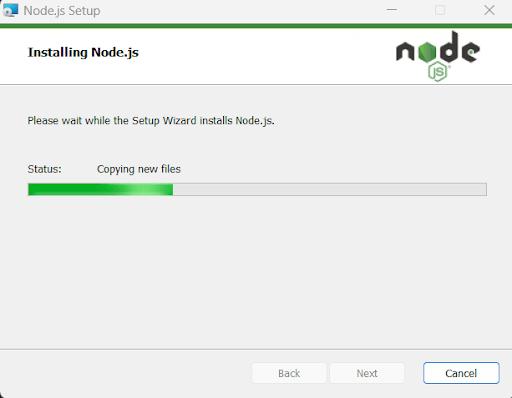
Step 10: After completing the NodeJS installation, click ‘Finish.’
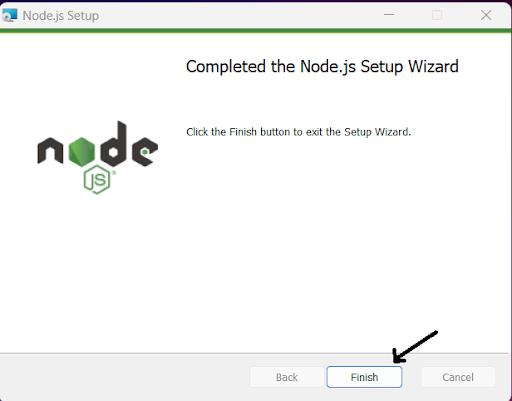
Step 11: Type ‘node -v’ on the command prompt to check if the installation is successful. As npm also comes with NodeJS, we don’t need to install it explicitly. To check if it’s installed, Type ‘npm -v.’
Command: >node -v
Output: v18.16.x
Command: >npm -v
Output: 9.5.x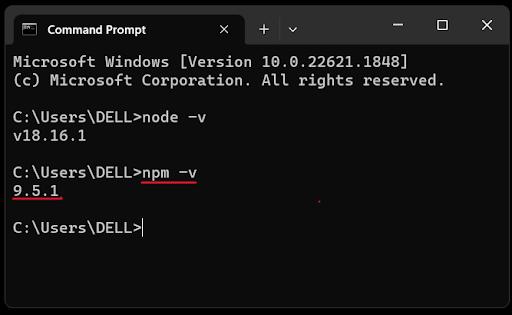
In both the versions listed above, our NodeJS installation is successful.
| Learn Node.JS Interview Questions and Answers that help you grab high paying jobs |
Node.js Installation FAQs
1. Does NodeJS follow unidirectional or bidirectional dataflow?
NodeJS follows bidirectional data flow. It means that NodeJS can pass data from parent to child. And also the opposite is possible in NodeJS.
2. What are the pros of NodeJS?
- NodeJS applications are quicker.
- The reuse of components is simplified.
3. Can I add NodeJS to an existing project?
Of course! We can add NodeJS with existing projects.
4. Is NodeJS a Framework or Library?
It is Not a Framework nor a Library but it is a Javascript runtime environment.
5. How to check the NodeJS version in cmd?
Just type the command node -v.
[ Related blog: How to Install Angular JS? ]
Conclusion
By extending the power of JavaScript to the server side, Node.js has changed how developers approach backend programming. Because of its non-blocking architecture, event-driven programming, and colossal package ecosystem, it is a popular choice for developing fast, scalable, and responsive apps. Node.js remains a crucial actor in the ever-changing scene of modern web development, helping developers to design new solutions that influence the digital world as technology advances. Hope this article helped you in setting up your NodeJS and understanding what NodeJS is, why it is used.
 On-Job Support Service
On-Job Support Service
Online Work Support for your on-job roles.

Our work-support plans provide precise options as per your project tasks. Whether you are a newbie or an experienced professional seeking assistance in completing project tasks, we are here with the following plans to meet your custom needs:
- Pay Per Hour
- Pay Per Week
- Monthly
| Name | Dates | |
|---|---|---|
| Node.JS Training | Dec 30 to Jan 14 | View Details |
| Node.JS Training | Jan 03 to Jan 18 | View Details |
| Node.JS Training | Jan 06 to Jan 21 | View Details |
| Node.JS Training | Jan 10 to Jan 25 | View Details |

Viswanath is a passionate content writer of Mindmajix. He has expertise in Trending Domains like Data Science, Artificial Intelligence, Machine Learning, Blockchain, etc. His articles help the learners to get insights about the Domain. You can reach him on Linkedin
















